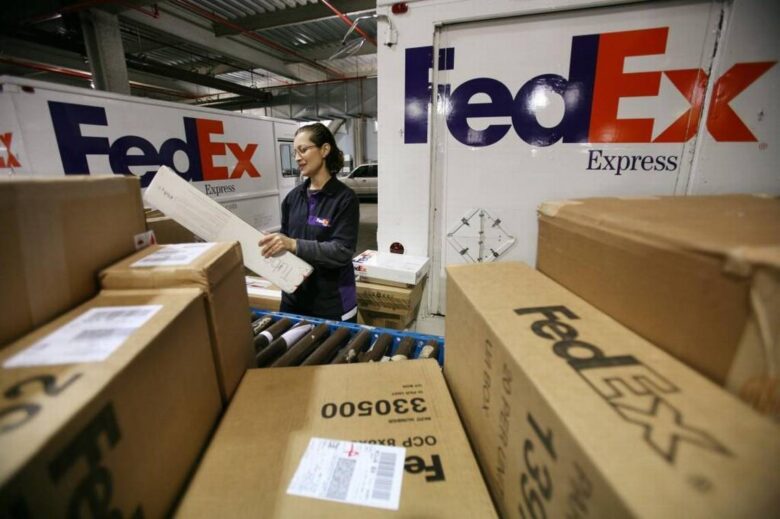Have you owned a FedEx route for a while and now you’re considering selling your business? Are you worried about the economy or gas prices and wondering if you should move to a different type of business? Maybe you’re looking into starting a completely different type of business, or you just want to retire.
Sometimes selling your business is correct, but not always. It depends on your individual circumstances and it can be a tough decision to make.
If you’re on the verge of selling, but you haven’t listed your business yet, here are 5 considerations to help you make the right choice.

Source: newsroom.fedex.com
Contents
1. You’ve been thinking about selling for a while
If selling your FedEx route has been on your mind for a while, you probably have some good reasons to sell. Whether it’s for personal reasons or you want to run a different type of business, wanting to sell for a long time is a good indication that it’s time to move on.
If you’ve made up your mind that it’s right to sell, before listing your business, consider timing your listing. According to DeliveryRoutesForSale.com, August is the best time to start selling because it will take around three to six months to complete the process. This is ideal because it pushes the transfer of your business past the end of the busy season (October through December) when FedEx is less likely to take on new contractors.
2. Fuel prices won’t stay high forever
If the cost of diesel has you considering selling your FedEx route, consider that high prices are usually only temporary. In the last few years, transportation and shipping companies have been hit hard by the rising cost of diesel fuel. However, fuel prices tend to return to normal after periods of instability.
Currently, fuel prices are already starting to come down and while they haven’t hit the bottom yet, they’re well on the way. The average cost of diesel was $5.81/gallon in June 2024 and went down to $5.46/gallon in July.
According to Vox, gas prices have been falling for more than 30 days in a row, but are still higher than they were a year ago. This is to be expected, though, since gas prices are always rising, even if just by a few pennies.
Even when only temporary, rising fuel costs are a valid concern for the profitability of your delivery route. Since you can’t change the cost of shipping, you have to rely on FedEx to adjust shipping costs to account for inflated fuel costs. This may or may not end up working in your favor as a route owner.
If you can hang on for the long haul, it might be worth a little setback. However, if you feel like you’re losing too much money in the short-term, it might be a good idea for you to sell. Only you can know what’s right for you.

Source: auto.howstuffworks.com
3. Do you enjoy running your business?
The biggest question to ask yourself is if you enjoy running your business because if you don’t like what you do, it’s always going to feel like an inconvenient chore to manage. When you don’t enjoy running your business, you won’t go above and beyond to ensure you succeed. You’ll give up when times get rough.
On the other hand, when you truly enjoy your business, you won’t give up when you go through tough times. You’ll be committed to persevering through anything and you’ll see your business through difficult situations. When you enjoy running your business, setbacks will just be like little pebbles in your shoe – you can shake them out and keep going.
If you’re feeling disconnected from running your FedEx delivery route, and you just don’t enjoy it like you used to, that’s a good indication that selling is the right move. You can sell your business and build something else with the money – something you enjoy doing on a daily basis.
4. Is your route profitable long-term?
FedEx routes should be profitable long-term if you’re running the business correctly. However, some routes are more profitable than others.
For instance, Ground P&D routes average 10%-25% of gross revenue, Solo Linehaul routes average 20% to 30%, and Team Linehaul routes average 40% to 45% of gross revenue.
If you’ve got a Linehaul route, you’re in a good position to make a solid profit long-term. Ground P&D routes are also profitable, but just on a smaller scale. If you were expecting higher profits that you aren’t seeing, it might be because of your route type. If that’s the case, and you’d prefer a route with a higher profit margin, sell your existing route to buy a Linehaul route.
Just remember that if you buy a group Linehaul route, you’ll need to have a team of drivers to complete your deliveries. Your expenses will rise along with your profits, so be prepared to calculate those expenses before jumping into a new route.

Source: onehundredfeet.medium.com
5. Are you letting frustration get to you?
Sometimes people decide to sell their business out of frustration. There’s no denying that running any kind of business can be exhausting mentally and physically. There are also all kinds of problems you’ll need to resolve, and even small problems can become frustrating.
Ask yourself if you’re allowing frustration to get to you. If you’re letting your frustration guide your business decisions, it’s probably not the right move.
Determined to sell? Sell your FedEx route through a broker
If you’re determined to sell your business, consider using a broker. A FedEx route broker will list your routes for sale, help you value your business, and vet potential buyers on your behalf. When a good buyer comes into the picture, a broker will handle the deal professionally and with your best interests in mind.
Just like any other business, hiring a broker will give you peace of mind knowing that everything is being taken care of by professionals. When you’re ready to sell, a broker will make it easy to move on to your next adventure.
